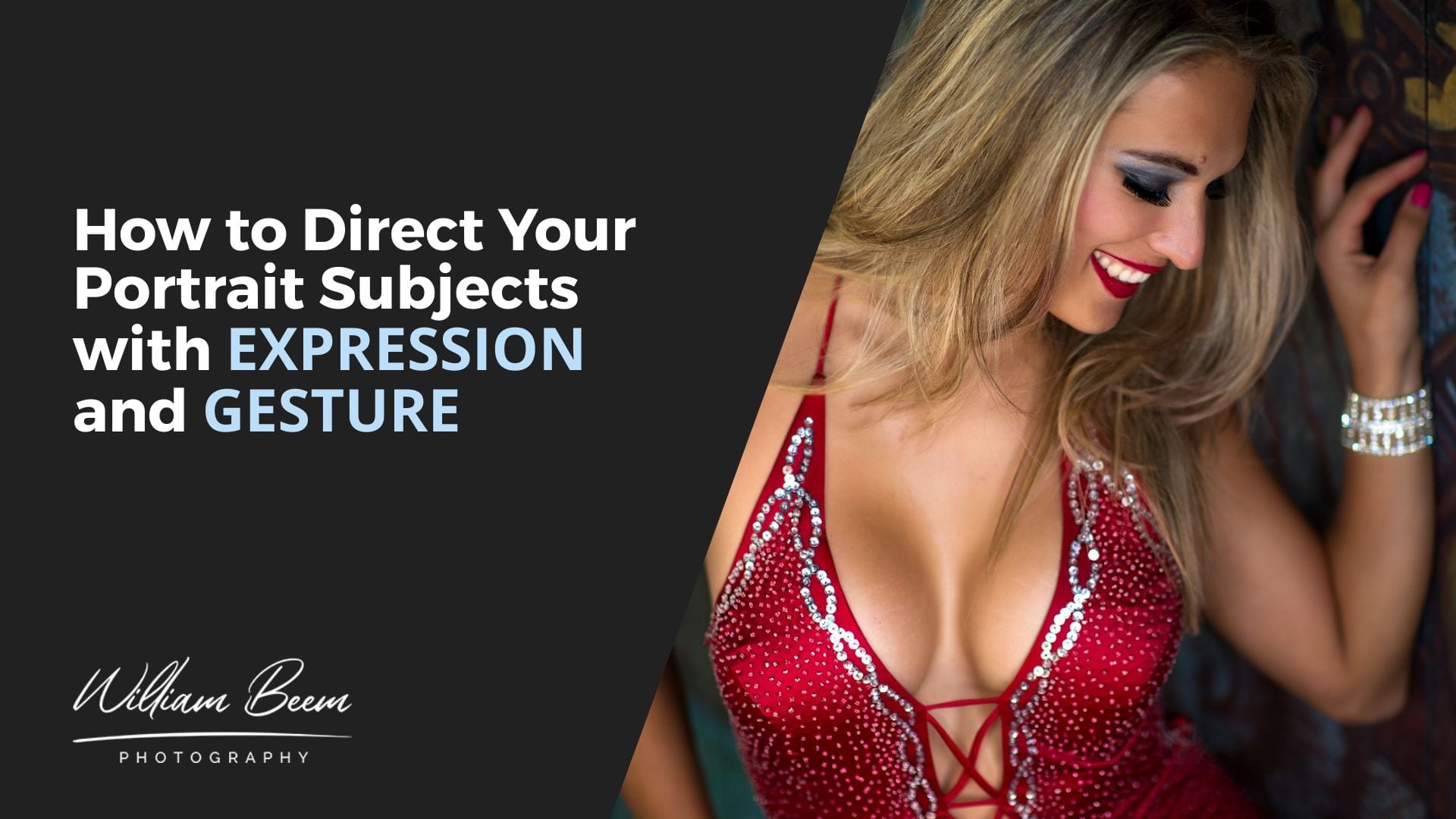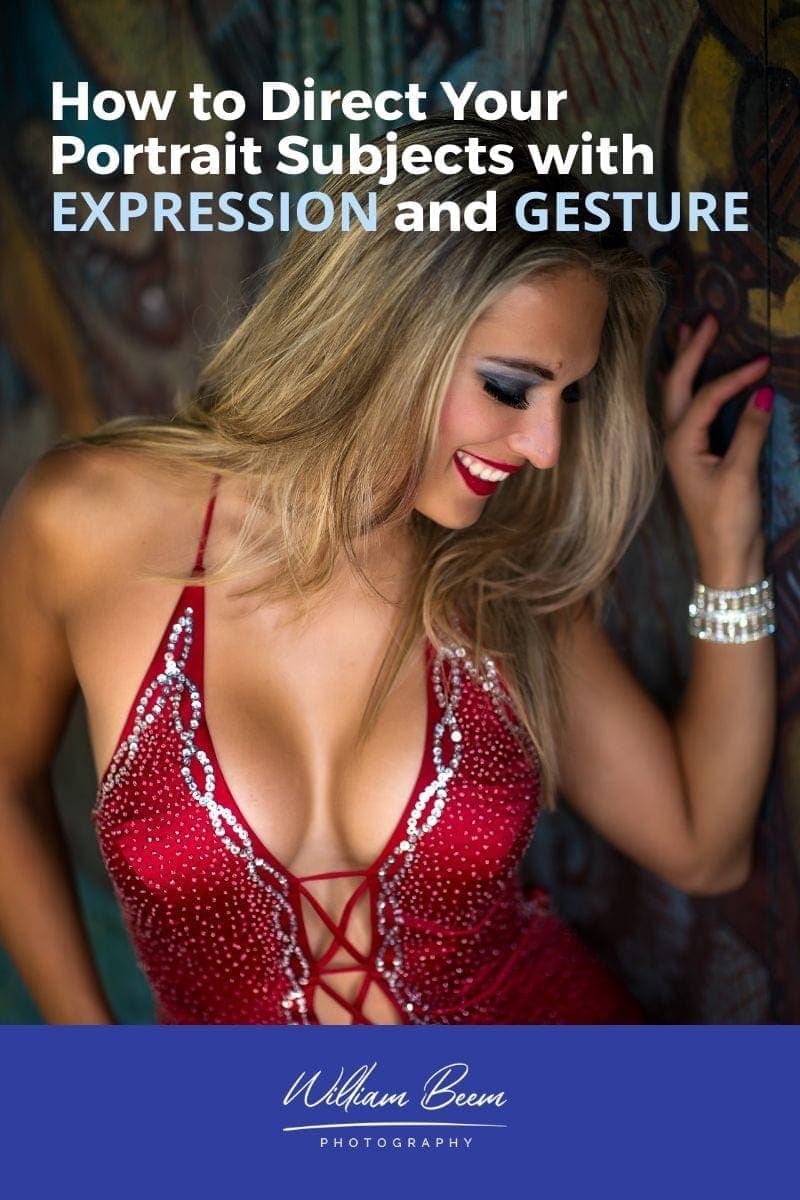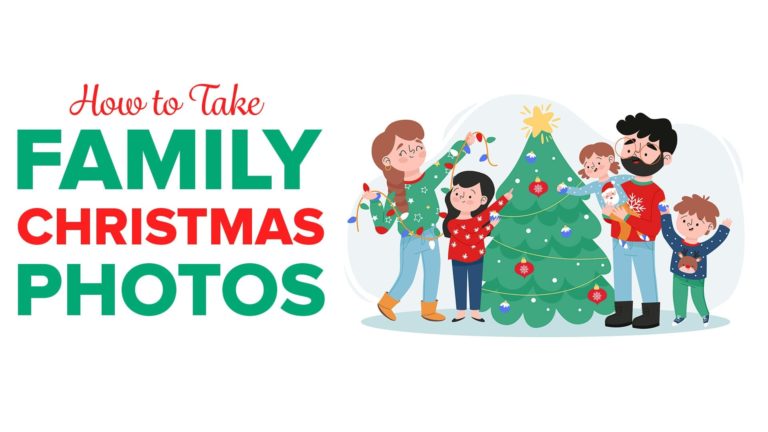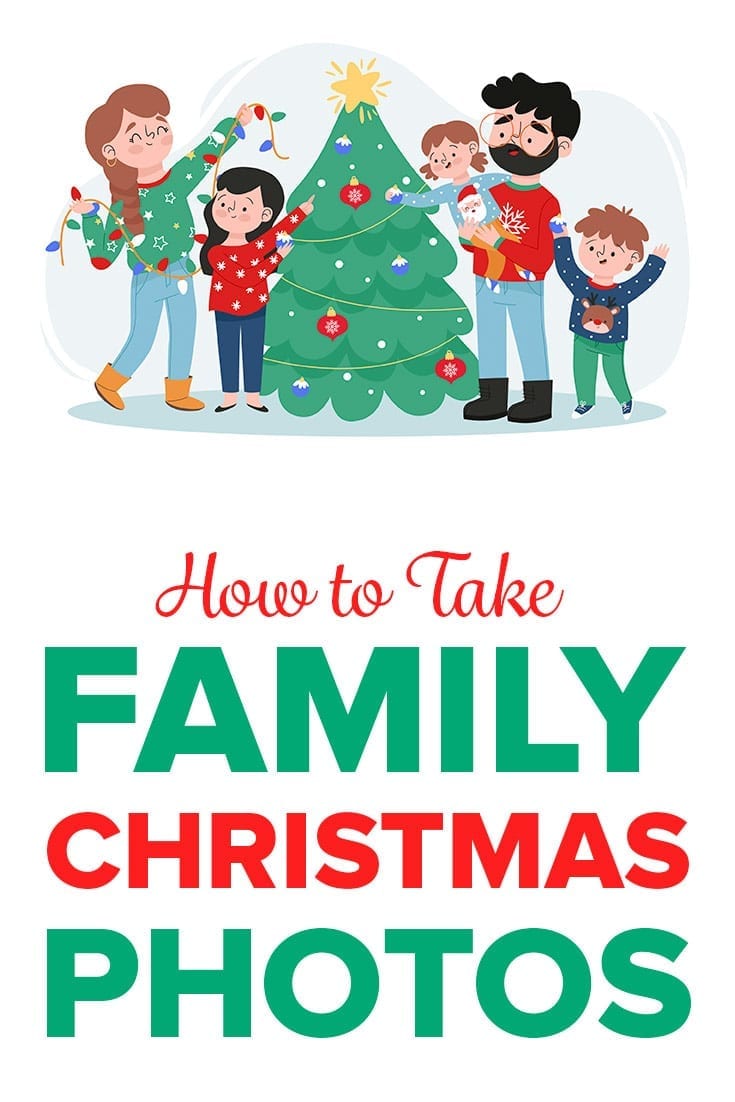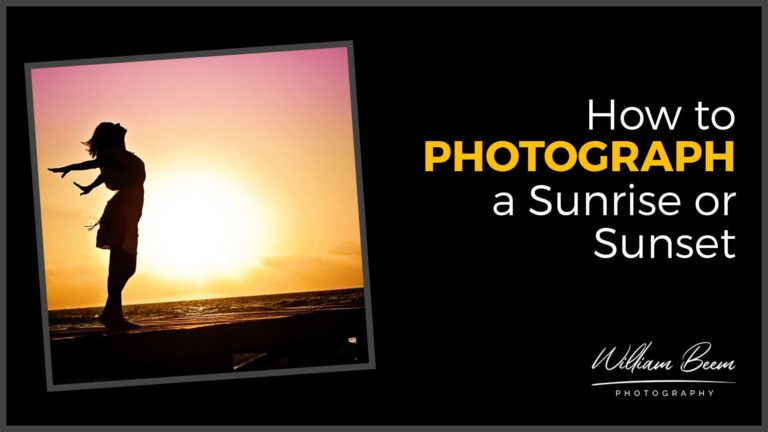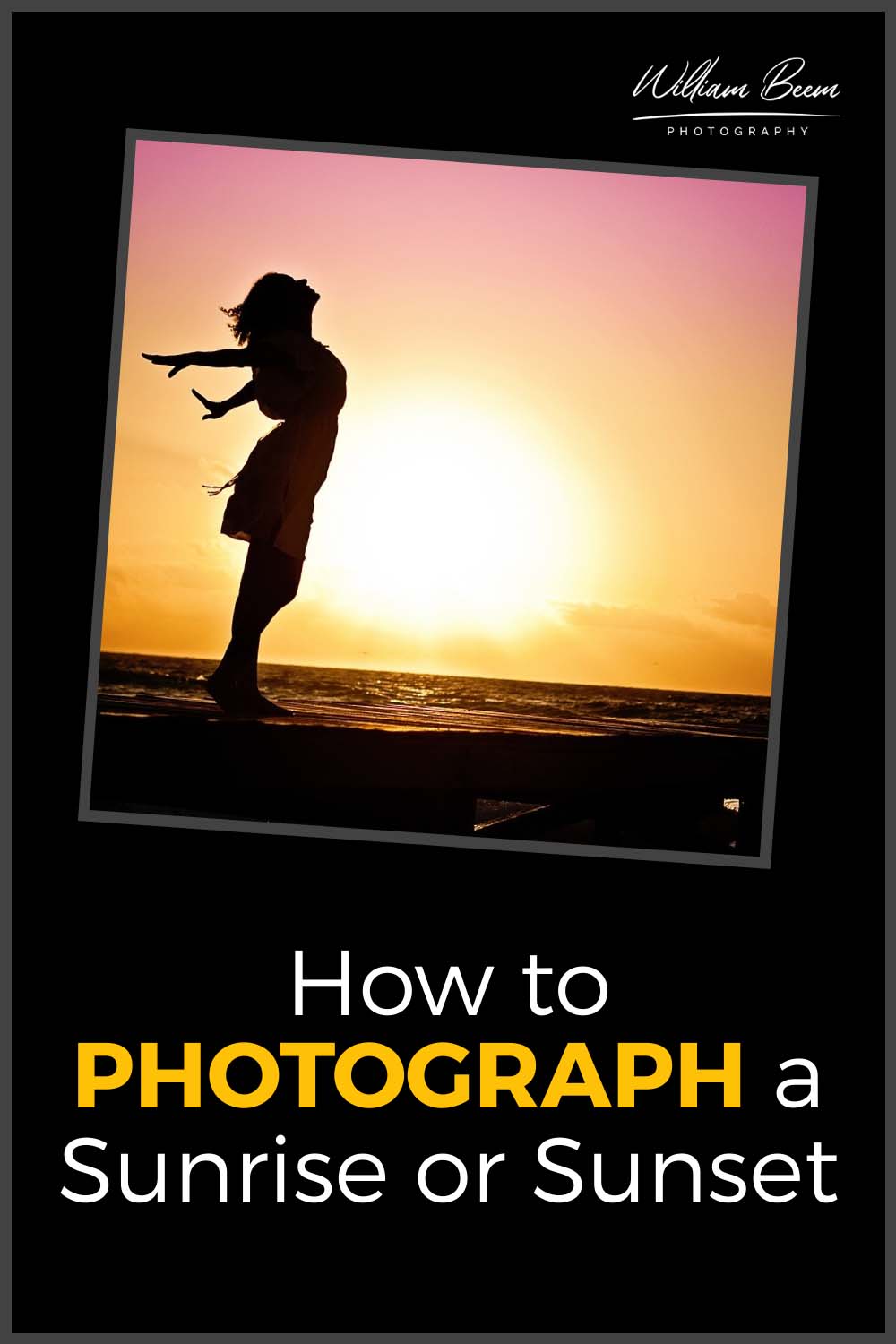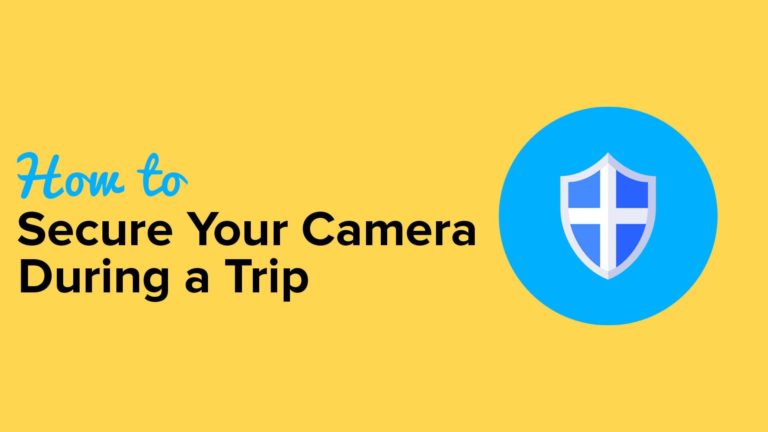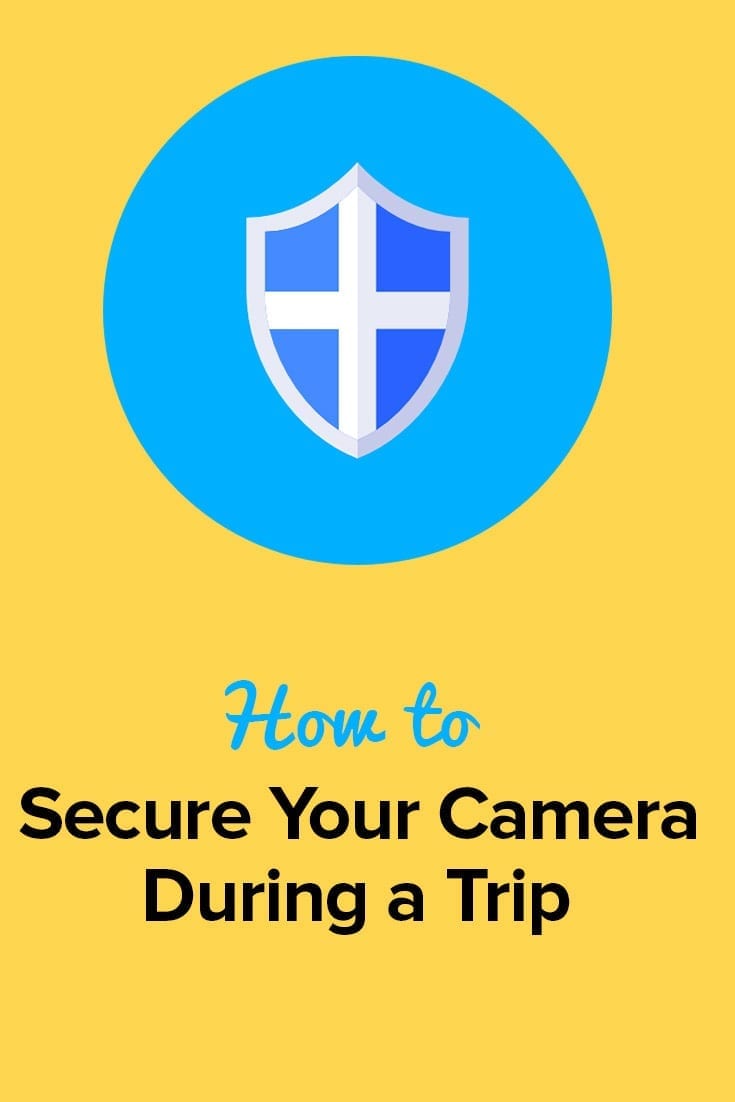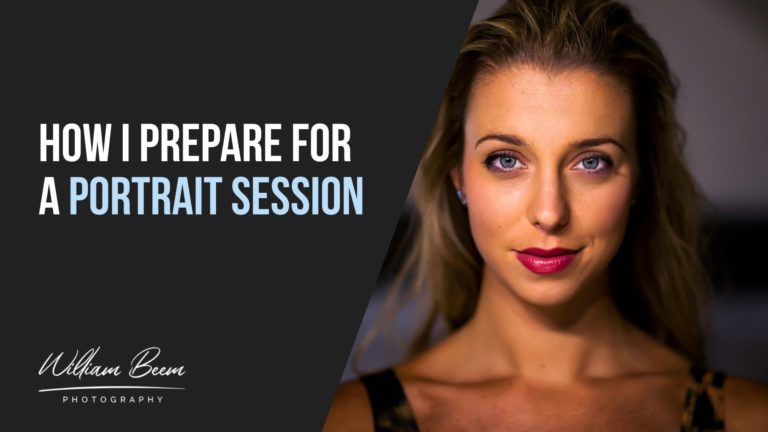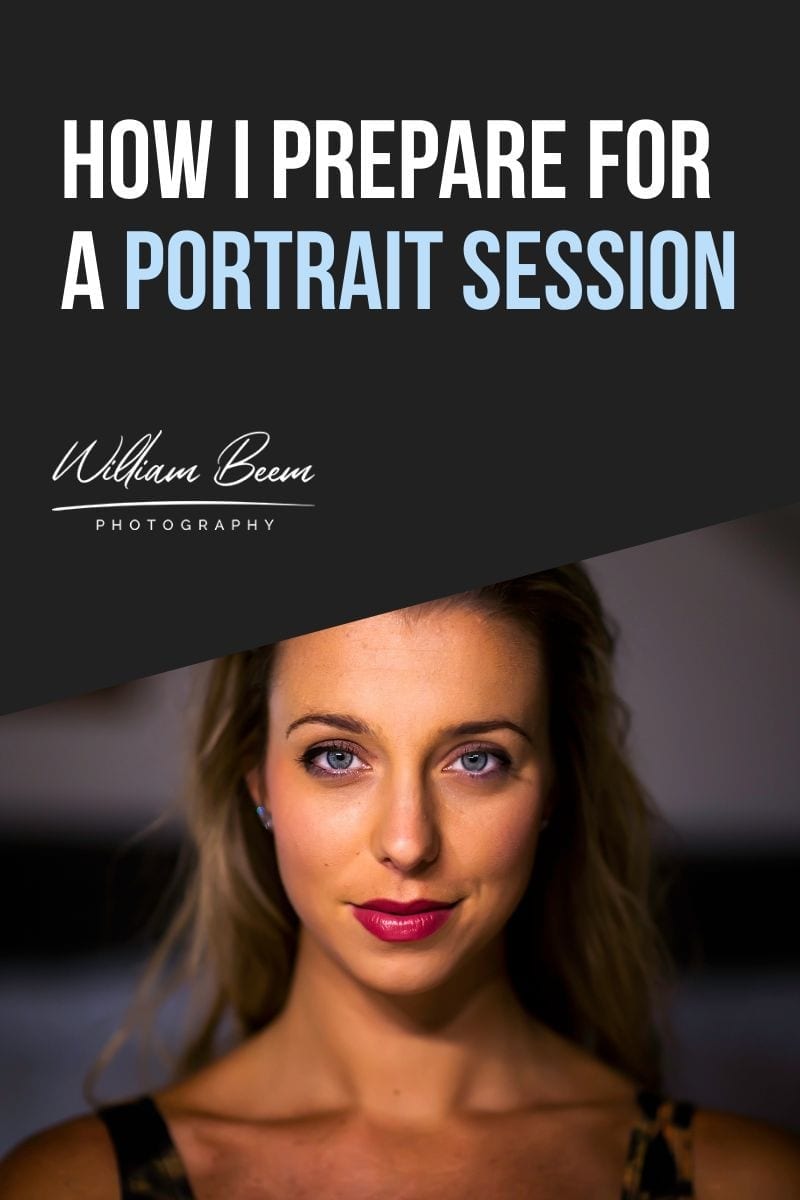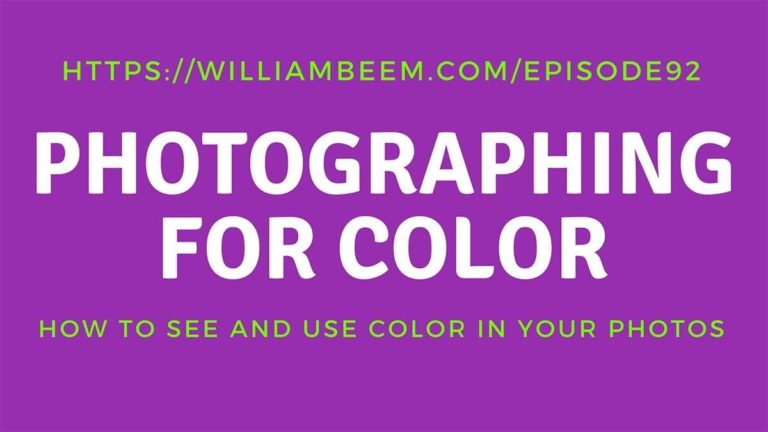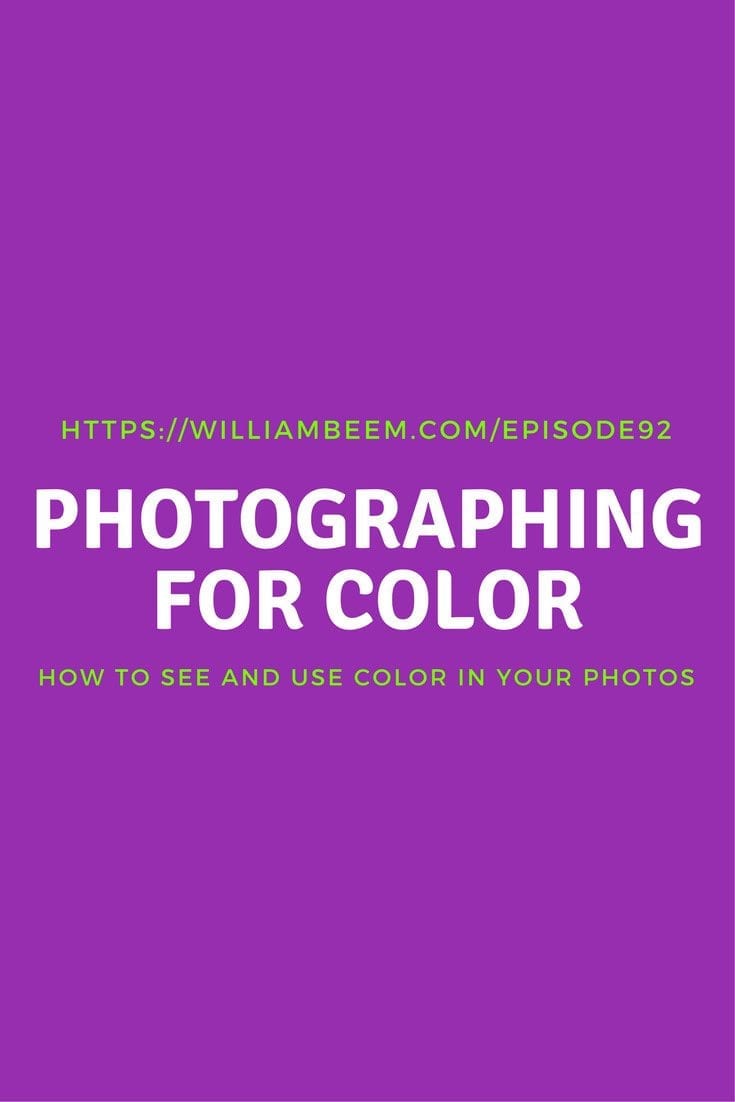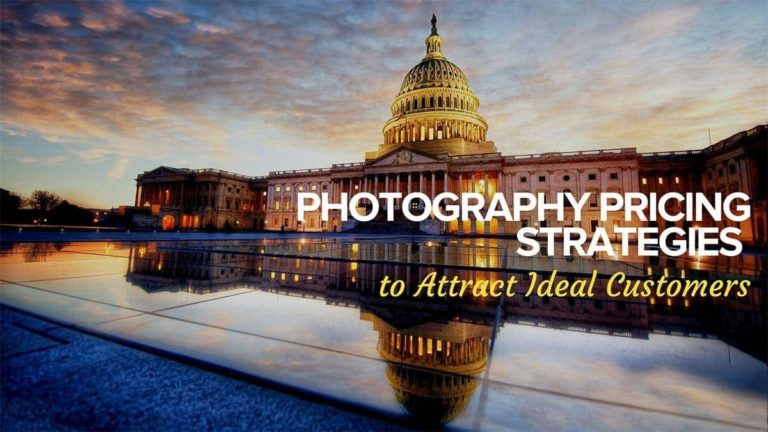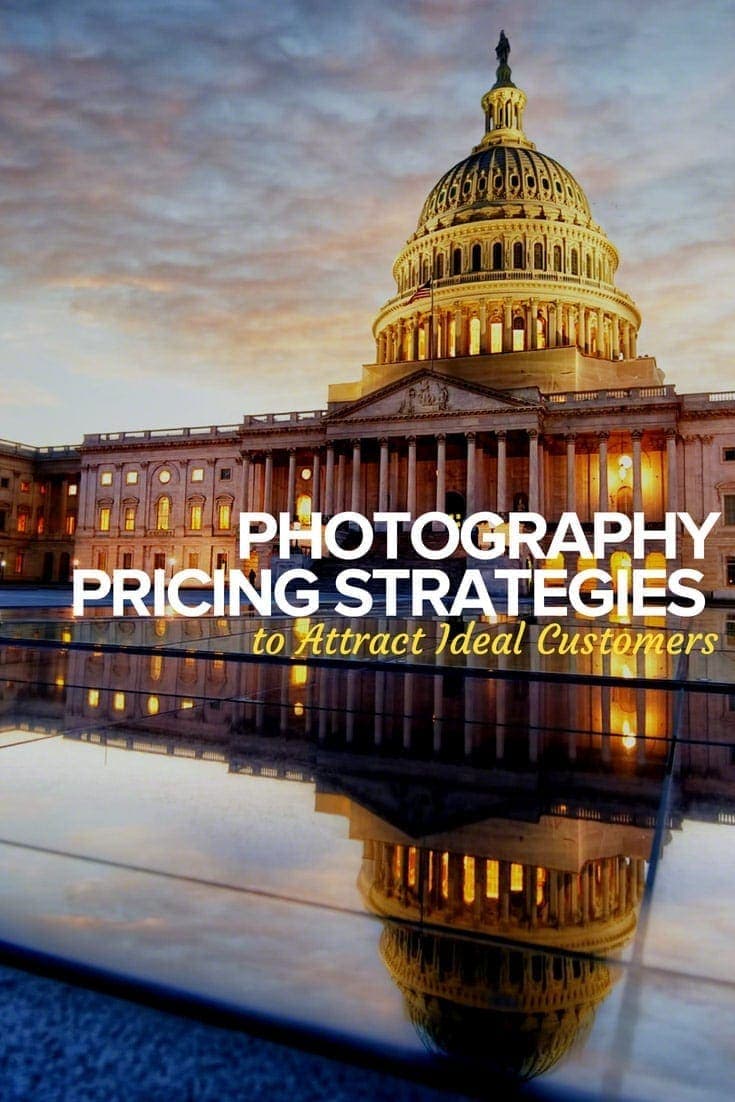Affiliate Disclosure: We earn a commission if you purchase through one of our links at no additional cost to you.
If you want to direct your subjects to create better portraits, you need to understand how expression and gesture combine to evoke an emotion from your audience. Without those two elements, people will flip by your photos without a second thought.
You need to create an engaging portrait, and the two best tools in your arsenal are expression and gesture. In this episode, we’ll discuss why they’re so important, how to determine the intent of your portrait, and how to direct your subjects to bring out expression and gesture.
Two Ways to Direct Your Subjects
Not every portrait subject is the same. Sometimes you get a person who can act and perform to create gesture and expression. Others can’t act, but they naturally have wonderful expressions and gestures within them.
Your job is to get the right person in front of your camera and know how to bring the best out of them.
Sometimes the best way to get a natural smile is to tell silly Dad jokes. Peter Hurley created a site with “Hurleyisms” (link below) – little things he says that confuse his subject and then cause laughter.
You don’t want to get them with the big laugh. Wait a moment as they start to recover, and you’ll find a natural smile that’s great for many portraits.
Another way to direct your subject is to provide them with a relatable scenario. During the show, we mentioned how Jerry Ghionis got the expression he wanted from a bride by telling her to look at her groom and say “I love you” with her eyes.
Find something relatable to your subject. Even if they aren’t a trained actor or model, you can relate to them with human emotions they understand and the expressions will follow.
Time Stamps
On a previous episode, we were talking about editing your photos. In other words, how you go through all the photos you've taken and what you're looking for to pick the one that's gonna be the final one. And some of the things we were talking about were expression and gesture and why they were so important. And I got to thinking, by the time you're editing your photos,
that's a little bit too late. So we kind of want to share with you how to draw the correct expression and gesture for your portrait. And that's what we're going to talk about today on I Like Your Picture. I'm William Beem welcome to I Like Your Picture. The show that helps you improve your photography with visual storytelling. What is visual storytelling is a method of approaching your photography with a knowledge of who you're trying to serve with your photos and what emotion you want to make them feel.
We encourage you to concentrate on your subject, light and background to create a photo. Your audience loves. I'm glad you found us. Hi, I'm William Beem and Lee is sitting here barefoot with a big ass cup of coffee. Cause it's just a rainy afternoon while we're recording. I like sitting with coffee. Hey, today, we want you to learn three things.
We want you to understand why expression and gesture are so important. We wanted to find, help you to find, the intent of your portrait, because that's going to really make a difference on how you pull the expression of gesture out of your subject. And of course, that's the other thing we want to tell you is to learn how to draw expression from your subject.
But before we get into that, I want to let you know about a sale that's going on this week. It's for a limited time, it is from Skylum software, the people who make Luminar and Aurora HDR, and they're combining the two for five days only. By the time this comes out on Wednesday, we'll all be a day into it. And you can go to Williambeem.com/skylumpair. S K Y L U M. Pair like P A I R, not the fruit. So here's what the deal is. You get Luminar, you get Aurora HDR and you get it for $99. That's a 45% savings. Normally it'd be $189. So you're getting basically $89 off the cost of the software. This runs until August 22nd, 2020. And it ends at 8:00 AM
Pacific time. Again, that link is William beem.com/skylumpair. And of course I will put that in the show notes. All right. So that part of the little message is over, I want to make sure you get that. Also, I've been putting some stuff about Skylum with Luminar on my YouTube page, go to Williambeem.com/youtube. And there's a nice overview there of what Luminar has,
and I'll be adding some more to YouTube in the coming days. Let's start off with our talk about expression and gesture and how they help evoke emotions from your portraits. Oh, Lee hello. You know, I always throw the first one over to you and I never know what's coming to hit me. Well, this one's actually going to be pretty simple.
Well, how do you feel when you look at a portrait where there really is no expression, this is kind of like blank, kind of like blank on purpose, I think is the way Peter Hurley described it. We've called it a dead fish expression, but basically there's no emotion in the face. There's no real gesture. What do you think when you see that?
Uh, I don't really, I just keep scrolling or flipping pages or blocking or whatever. So it doesn't reach you in any way. I mean, it's not like I don't hover over it and think, Oh, what a weird photo or empty photo. I just don't think about it. If nothing grabbed, basically, if nothing actually grabs me, I keep moving.
And that's the point we want to talk about what grabs you when you're looking at a portrait, you know, and it could be something that's an advertisement. It could be something that somebody put up there because they liked taking portrait photos. What grabs you? You! Oh, okay. We're married. So I'm allowed to do that. I've got a license. I'm talking about in the portraits.
If you're looking at something, what really gets your attention? Do you know what? I, it's not something that I see as much as it's something that I feel. There are certain things that draw you in and that could be intrigued. It could be warmth. It could be a smile. I think the face and the facial expressions are very powerful in drawing me in with when there's a person that,
you know, if it's a portrait subject. So that is very important. I'd say that supersedes the importance of color and composition and everything else. I'm not even gonna stop if I don't feel like I'm pulled in. And facial expressions, sometimes just the way that the body is positioned gestures. Those are the things that either draw people in. And it's not necessarily that it's welcoming or inviting,
but there is some kind of feeling that you get. And if I don't get hit with some kind of emotion, I, And as you were talking, that's what I was going to say. I hear you saying it's going to be an emotional response. You don't even know what the emotion is going to be. It's not like you're looking to say,
Oh, I'm looking for a happy photo. Doesn't matter. Cause I'm probably not looking for a certain emotion. I'm looking at pictures. But when you see one that's striking is because it evokes some kind of an emotion to you. And I think one of the best ways to do that is with both expression or gesture. Expression, I think most people understand we're talking about facial expressions and they can vary wildly.
They can be very subtle sometimes too, but you still kind of get what's going on because we read out each other's expressions all the time. Gesture is, put simply, I think gesture is body language. Would you agree? So when you're looking at body language, what does that tell you? It actually tells a lot about the person's positioning emotionally towards you. The viewer.
Now I know that the person's posing, you know, your model or portrait subject is not posing thinking about you specifically. They don't know who's going to see the photos, but there's something about that relationship with, I guess, in the shoot, it would be with the photographer, the camera lens, there was something going on there that you want to see and feel because when you're all on the viewing,
end of it, you want to feel something. So the body language is extremely important. Most of us know there are certain characteristics signs that are unmistakable. We do it all the time. Even subconsciously you know, open arms, folded arms here, turning slightly to the side, a frown, a smile. Yeah. Is your body language open or is your body language closed?
Are you perky and upright? Are you slouched and defeated? I think one of the best ways to evaluate body language is actually to look at street photography. People who go out and do street photography are looking for other people that are going through their day. And there's something about their body language that says something about what their position is in life at that moment.
Yeah. You may remember this from old news stories. I mean the, the most famous one that I remember is the sailor and the nurse kissing at the end of World War II, you know, in New York. That's body language! I mean, they made, they made a statue out it in San Diego. That's body language, but it doesn't have to be like that.
There are also a number of photojournalistic and street photography shots where you just see people's human condition and their body language, whether they're exhausted, they're jubilant, whatever their case is, maybe they're working and you see something about their body language that tells you the story of what's going on with them. Yeah. They're tired or they're energetic and just started the day off.
Or enthusiastic. Body language is actually quite a subtle thing. It's very obvious when you stop and look for it. But it's one of those things that, you know, it's in front of you all the time, you're doing it all the time. It's not something we consciously think about, unless maybe you're in an interview or something. You know what?
I look at body language and gesture in, I'd say high end product advertisements. If you look at Gucci or Chanel or some of those things, some of them are posed. Some of them are even posed to the point where they look like they're supposed to be candid photos. And they do a lot of color grading with these things. But they're, I think they're actually very interesting. When you see a man and a woman sitting on the edge of a yacht,
having a nice time. There's something of the body language that tells you, yes, we're rich, we're wealthy and relaxing and we can afford this. And we're enjoying your life. Yeah, yeah, Yeah. There, we can afford the, I don't know if Gucci makes watches, I can't afford Gucci. But whatever it is that Gucci selling the clothes or whatever,
there's a lifestyle that goes with it. And there's a body language that goes with that lifestyle. Gucci makes really nice perfumes. Okay. It's not Christmas yet. Alright. Now here's the fun part. When you're doing portrait photography, you still want to have some kind of gesture and emotion, but the question is, are you showing the character of your subject or is your subject portraying a character?
Yeah, I know that's... Yeah, that's actually very important. It's maybe less important for a model or a subject who's very experienced that. Putting things on and, and falling into her role. Like our daughter is drama with an acting was a big part of what she did. You can tell her to put on a certain mood or a look and she can just do it.
You ask me that. And I sit, there I go. That's not me. And that just happened to us recently. You'll see. With a previous podcast, we were talking about how we executed in our home studio. All it was was really a very simple of Lee sitting in a chair. We started off, I think, with something that was probably uncomfortable for her, was her hair was down.
Usually you don't keep your hair down. And I was trying to talk you into an expression and it just didn't look natural for you. It wasn't natural, you are not a person who portrays the character, but the moment I told you be yourself, I have plenty of character, character, the portrait that I got revealed who you are. Yes. So I think this is something that you need to keep in mind is if you have an idea for what kind of portraits that you want to take.
And quite honestly, that's what we recommend is, is have a vision of the result before you even start. Who you choose as your subject and their ability to portray what you want is extremely important. Yeah, absolutely. So if you choose someone, like you really like this person's look, but they cannot portray a character that you want for the life of them, it's really not going to work out.
Also when it comes to body language, it's, you know, this is something that you do naturally to communicate how you're feeling or whatever those circumstances or environment are. We, we all do it. It just kind of flows naturally. And it's a subconscious thing. As soon as you start thinking about it, it kind of falls apart. And that's where if you've got somebody and,
you know what, maybe you haven't hired a model. Maybe this is you taking a photo for a friend, and this is not something they are comfortable with. That's something really important to keep in mind. I think then you need to find out either review how you want them to look. Your choice of your subject, really determines what they can provide for you.
So you need to know in advance and that comes from talking to them, working with them, or maybe talking to other people that have worked with them, kind of getting a feel. Is this someone who can show you something that you can imagine, or is this someone that you saw some spark of things that they normally and typically do that you want to put in your portrait. And if it was planned in advance and you don't know your subject,
probably you should have some kind of discussion with person about it. I would say, yes. You definitely want to have a discussion before you get into the portrait and say, this is my vision of what I want. And I need your help to, you know, to try and bring it to life. That's what the portrait subject is going to do.
Some people can do it. Some people can't, and it's not really a fault if they can't because not everybody's trained to be an actor or actress, but there are different ways that you can coach your subject into the expression or gesture that you want. Because we all have things that we can relate to. And a lot of portraits, you know, people go up there and they,
the first thing a lot of photographers say is, okay, big smile. Yeah. And that's not necessarily the best portrait. Lee had a big smile, not an enormous one, but you had a nice smile going on in the portrait we just took. But I accepted that because that's who you are. You're typically happy. And you've got a smile going on as you go around,
but that's not always what the portrait vision is. Sometimes you want a very subtle expression. It could be happy. It could be plaintive, it could be thinking. We were looking at a vendor's website one time and they had some portraits there. And I remember there's one Samuel, L. Jackson and Lee and I were both looking at this and thought, all right,
is that a dead fish? And she says, no, there's something going on there. You remember that one? What did you see going on with that one? I saw intensity behind his eyes. There was an intensity. He was focused on something, maybe not something externally, but his mind was locked into something. And that's what I saw. And I,
I got drawn straight to first to the eyes in that one, because I don't even know if it was the eyes like visually, but, um, that stood out in the photo. But I went straight there because I was drawn straight into where the expression was the mood. Yeah. It wasn't a smile. It wasn't sad. It wasn't anything over the top,
but he just, there was an intensity behind his eyes. At least that's what I was looking at. You know, as I kind of drew into it, the man's an actor, you would expect that he would be able to do that. It's kind of like the same thing. Also, if you watch Dwayne Johnson, the guy who used to be known as The Rock.
he's got this smolder look that he likes to put on and he just kind of turns his head cocks up a little bit and he kind of smolders there. I thought, all right, that, that's actually an interesting look for a portrait. I don't know if I can take it too much in the movies anymore, but he's got this look. And I think that's one of the things that if you're just doing a straight up portrait,
maybe head and shoulders, you want some kind of a look. But again, if you're dealing with people who aren't actors like these folks that we're mentioning, how do you get that out of them? It goes back to what you want. Uh, one of the things I like is Peter Hurley has talked about this before, when he's doing head shots, he doesn't want the big smile.
He wants a natural smile. And the way he goes about that is by saying simple, silly things. And he's got a website called Hurleyisms.com. We've got a list of these things. It's like, you know, turn your left knee towards Fort Knox. And it's designed to kind of confuse the person for a moment. And then they kind of get a natural smile as they realize what he's talking about is just a joke.
Those are little things that he says. And like I said, there's a list of them on his webpage for hurleyisms.com. That's how he gets the expression that he wants. I do not necessarily use his expressions, but when I've been working with models, sometimes if I want a natural expression, I will say something stupid and silly as well. I'll, I'm trying to crack them up. And I don't want them at the moment that I'm cracking them up.
You know, when you have get like a big laugh going on, there's a moment after that when you kind of relax and you still got a little smile, a little subtle smile. Yeah. Now that doesn't always work because sometimes the expression you want, isn't a smile or a happy one. If you want somebody to evoke something, you need to give them something to think about that they can relate to.
Another thing that came to mind is I was watching a training session from Jerry Ghionis. He's the guy who wins all the awards for wedding and portrait photography. He showed a photo not too long ago from when we recorded this. And it was kind of like a dual composition. In other words, there was a bride inside of a Bay window. And in the reflection on the other side,
she had the groom standing up and he just kind of matched it. So their faces merged together. So in other words, like his head was inside of the outline of her face. I know it sounds weird, but it was actually kind of clever. And his direction to the bride was I want you to look at him and say, I love you with your eyes.
And she immediately understood what that meant. You know, this is the man she's going to marry. She knows she loves him. She knows how to give an expression that shows that. I mean, Lee, if I told you to give me an expression, says, I love you with your eyes. Could you do that? See she's doing it right now.
You can't see it, but I can see it. If only we had a video camera here, but then again. Can you relate to that kind of direction? I can. In our circumstances, if we weren't married, that would be kind of awkward. I wouldn't expect you to have that same kind of expression. If there was a stranger on the other side of the window,
and you said, say, I love you with your eyes. You don't feel it. You don't relate to it, but that's one of the things. If you're going to be coaching an expression or gesture out of subjects, who typically aren't trained as actors or models, you need to find something that they can relate to and then say, okay, I need you to look like,
and then give them whatever it is that you're looking for. Whatever that you want them to feel. People naturally, I think, understand how they're going to make an expression or a gesture to exemplify that kind of emotion. Talk them into it, or talk them through it. All right. And that's our show for this week. We just wanted to give you some points on expression and gesture,
why they're so important. If you're going to be taking these emotions from the character of the person themselves, or if you have someone that's going to be portraying them and a couple of methods to coach somebody into getting the you want. Just one last reminder that until August 22nd at 8:00 AM Pacific time, you can get Luminar and Aurora HDR it's on sale. Go to Williambeem.com/skylumpair. And again, that'll be in the show notes. The price is $99, which is a 45% savings. So I hope you get it. A lot of things or make wonderful pairs, you know, like peanut butter and jelly, hugs and kisses, burgers and fries. Yeah. Well, you know, like it's like that restaurant we went to that says a burger without fries is like a hug without kisses.
So here's your other pair. Luminar and Skylum for $99. Thank you so much. Thank you so much for joining us on I Like Your Picture. This is episode 230. So you're going to find show notes available williambeem.com/episode230. Of course, in the show notes, I will link to the Skylum sale on Luminar in Aurora. Man, I had
a little brain fart there, and also I'll share the hurleyisms link on the show notes. We really appreciate you. Thanks so much. We'll see you again next week.

